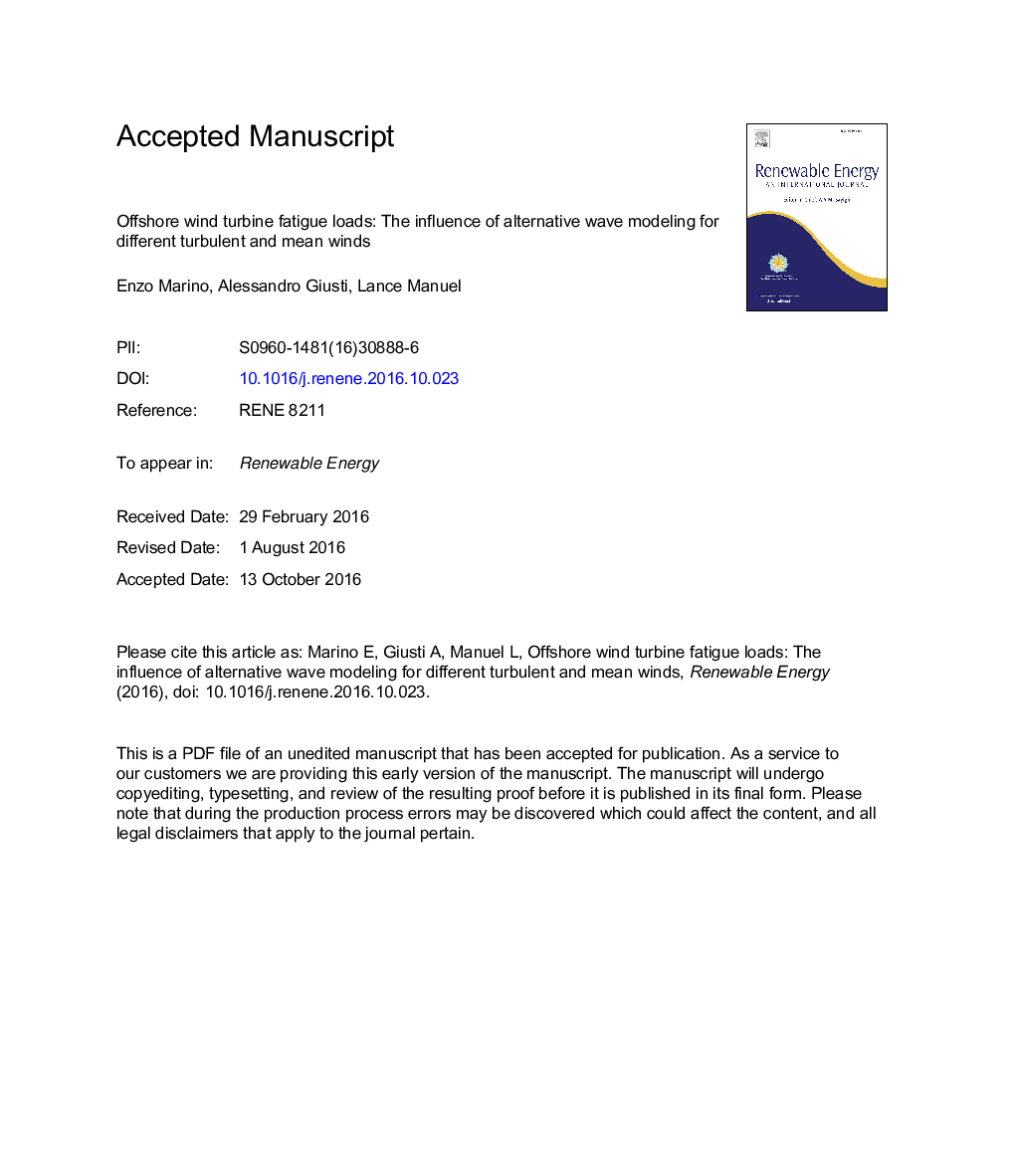| Article ID | Journal | Published Year | Pages | File Type |
|---|---|---|---|---|
| 4926814 | Renewable Energy | 2017 | 40 Pages |
Abstract
The coupled hydro-aero-elastic response and fatigue loads of a bottom-supported offshore wind turbine under different wind conditions and for different wave modeling assumptions is the subject of this study. Nonlinear modeling of hydrodynamic forcing can bring about resonant vibrations of the tower leading to significant stress amplitude cycles. A comparison between linear and fully nonlinear wave models is presented, with consideration for different accompanying mean wind speeds and turbulence intensities. Hydrodynamic and aerodynamic loads acting on the support structure and on the rotor of a 5-MW wind turbine are modeled in a fully coupled hydro-aero-elastic solver. A key finding is that when the turbine is in a parked state, the widely used linear wave modeling approach significantly underestimates fatigue loads. On the other hand, when the wind turbine is in power production, aerodynamic loads are dominant and the effects due to consideration of nonlinear wave kinematics become less important.
Related Topics
Physical Sciences and Engineering
Energy
Renewable Energy, Sustainability and the Environment
Authors
Enzo Marino, Alessandro Giusti, Lance Manuel,
